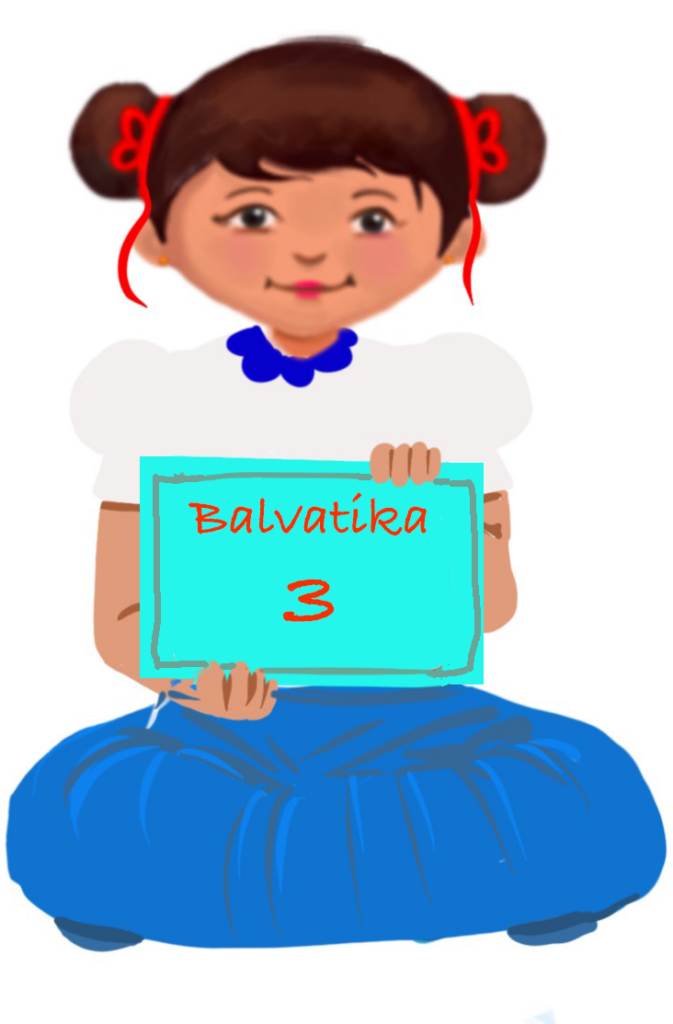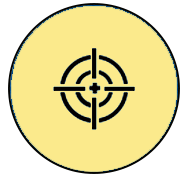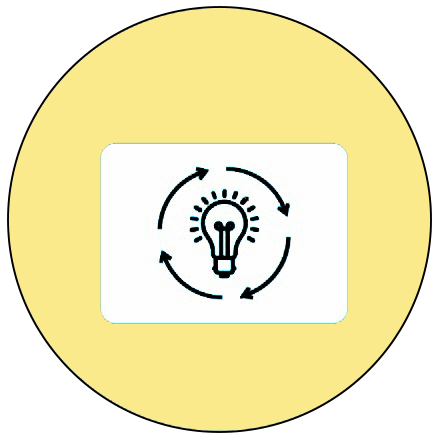
Sorting and Classifying
Week 2 – Sorting by Size
Learning Outcome
Sorts objects into 3 groups based on size (small, medium, big).
 Objective
Objective
Children will sort objects and pictures based on size when provided with assorted objects of different sizes.
 Prerequisites
Prerequisites
Children know the concept of size (big, medium and small).
 Pre-Teach Vocabulary
Pre-Teach Vocabulary
Together, small, big, medium, sorting
Introduction
- The teacher may use the objects available in the classroom to discuss the sizes of the objects. For example, the teacher can show and compare the size of two pencils, two water bottles, or two notebooks.
- Once they are familiar with big and small sizes, a medium-sized pencil or water bottle can be shown to make children understand medium size.
- For children who are visually challenged, the teacher can arrange real objects so they can feel and compare the sizes of different objects.
- The teacher can show the video song titled ‘The Vegetable Seller’ for an introduction to different sizes of vegetables.
- Picture cards can also be used for sorting.
Video: Introduction to Sorting – The vegetable seller
ISL Video: Introduction to Sorting – The vegetable seller
Activity 1: Sorting balls by size (Big, medium and small)
Objective:
To sort real objects (balls here) from the assorted basket of balls in a play-way method.
Importance of the activity for children:
Helps in developing:
- Fine motor skills (picking the balls)
- Gross motor skills (bending, picking and reaching the basket)
- Cognitive skills (putting the ball in the right basket)
- Social skills (cooperation, waiting for their turn, playing together)
Resources required:
- Balls of two different sizes.
a. Number of balls: Depends on the number of children. - Bins, small baskets, or cardboard boxes to keep the balls.
Setting for the activity:
The activity can be done indoors or outdoors, depending on the space availability.
Type of activity:
Pair activity
Preparation of activity:
The teacher provides a bin with balls of different sizes. Empty bins for sorting.
Role of the Teacher:
Demonstrator and facilitator.
Procedure:
- The balls of different sizes are kept on the floor.
- Empty bins with labels – Big, Medium, and Small – are kept in front of them.
- Children will work in pairs to sort the balls by picking them up and putting them in the right bin according to the size of the ball.
- To make the activity more interesting, the teacher can give a paper cup to each child to hold the ball from either side and reach the bin. (As demonstrated in the video)
- This process can be repeated for the other pairs as well.
Observation:
The children are made to observe the result of the activity as follows:
- The teacher may show the bin labelled ‘Big’ to the children and tell them that all the big balls have been collected in the bin labelled ‘Big’.
- Then the children may be asked which bin they have put all the small balls in. The answer too may be given after eliciting the response from them, saying, “Yes, we have collected all the small balls in the bin labelled ‘Small’.
- The same may be repeated for medium-sized balls by asking the children to collect them in the bin labelled ‘Medium’.
- The teacher can note down her observations and guide the children accordingly. For example, if the child is still confused as to where to put the ball, she can help the child by demonstrating or with the help of some other learning aid, such as flash cards.
Conclusion:
Children would learn to sort balls given to them as big, medium, and small.
Video: Sorting balls by size
ISL Video: Sorting balls by size
Adaptations and Strategies Video: Sorting balls by size
Activity 2: Sorting Vegetables
Objective:
To sort real objects (vegetables here) from an assorted basket of vegetables.
Importance of the activity for children:
Helps in developing:
- Fine motor skills (picking the vegetables)
- Cognitive skills (putting the vegetables in the right basket)
- Comprehending skills (understanding different sizes of vegetables)
- Social skills (cooperation, waiting for the turn)
- Language skill (names of different types of vegetables)
Resources required:
- Vegetables of different sizes (Big, medium and small)
- Number: Minimum 3 of each size
Setting for the activity:
The activity can be done indoors or outdoors, depending on the availability of space.
Type of activity:
Individual or group
Preparation of activity:
The teacher may provide different-sized vegetables and three baskets labelled as big, medium, and small.
Role of the teacher:
Demonstrator and facilitator.
Procedure:
- The teacher may start by demonstrating the activity.
- For example, she will pick a bottle gourd and keep it in the basket labelled as big. A cabbage in the medium basket and a lemon in the small basket.
- Further, the teacher will encourage the children to complete the activity by arranging all the vegetables in the right basket.
Observation:
The children are made to observe the result of the activity as follows:
- The teacher may show the baskets at the end to reinforce the concept of sorting by size.
- The teacher may write her observations for the feedback.
Suggested Variation in the activity:
- Teachers can start the activity with two sizes—big and small.
- The level of activity can be increased by adding medium-sized vegetables.
Conclusion:
Children would learn to sort vegetables according to their size.
Activity Video: Sorting vegetables
ISL Video: Sorting vegetables by size
Adaptations and Strategies Video: Sorting vegetables
Check list for teacher:
| Activity | Yes | No | Sometimes |
| Children can: | |||
| Identify different sizes (big, medium and small) | |||
| Sort one size at a time | |||
| Sort more than one size at a time | |||
| Complete the activity in the given time | |||
| Do the activity independently | |||
| Able to express verbally and through actions, expressions or gestures |
Home Activity
a. Sorting cups by size
b. Sorting buttons by size
Activity Video: Sorting cups by size
ISL Video: Sorting cups by size
Video: Sorting buttons by size
ISL Video: Sorting buttons by size
Cross-Curricular Connection
In art class: draw balls of different sizes or use clay and make different-sized balls.
LTM: Picture cards
LTM: Vocabulary cards
LTM: Communication cards
Assessment
Assessment Type: Activity
Asset Objective: Children should be able to sort the leaves based on size.
Materials Required:
1. Leaves of three different sizes (10 to 15 leaves).
2. A basket of assorted leaves.
3. Three baskets labelled – Big, Medium and Small – for sorting.
Procedure
1. The teacher or the children will collect leaves of different sizes in a basket.
2. Three empty baskets labelled Big, Medium and Small will be provided to the children.
3. Children will sort the leaves according to their size and put it in the appropriate basket.
Observation
1. The teacher can observe and note the child’s performance.
2. Feedback can be given.
3. Appreciate and encourage the child’s work.
Teacher Resource Document
| Source and Attribution of images: All images used in the above Assets and Aids are originally created. |
| This digital material has been developed by the Sri Sathya Sai Vidya Vahini Inclusive Education Project, a unit of Sri Sathya Sai Central Trust, Prasanthi Nilayam, as a collaborative offering in the service of our nation. |